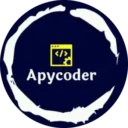
Introduction:
Greetings future web developers! Today, we embark on an exciting journey into the fundamental realm of web development with HTML. Join me as we unravel the essential elements of HTML, demystifying tags, attributes, and the foundational structure of a basic HTML document.
Understanding HTML Basics:
HTML, or Hypertext Markup Language, forms the backbone of every web page. Let’s delve deeper into the essentials:
1. HTML Tags: Building Blocks of Web Pages
HTML uses tags to define elements on your page. Tags are enclosed in angle brackets and come in pairs – an opening tag and a closing tag. Here’s a basic example:
<p>This is a paragraph.</p>In this example, <p> is the opening tag, and </p> is the closing tag, wrapping around the paragraph content.
2. Attributes: Adding Extra Information
Attributes provide additional information about HTML elements. They are always included in the opening tag and are typically in the form of name/value pairs. For example:
<a href="https://www.example.com" target="_blank">Visit our website</a>Here, href is an attribute of the <a> (anchor) tag, providing the hyperlink destination. The target="_blank" attribute opens the link in a new tab.
The Structure of a Basic HTML Document:
Let’s explore the basic structure of an HTML document. Every HTML document follows this skeleton:
<!DOCTYPE html> <html> <head> <title>Your Page Title</title> </head> <body> <!-- Your content goes here --> </body> </html><!DOCTYPE html>: Declares the HTML version.<html>: The root element of an HTML page.<head>: Contains meta-information about the HTML document, such as the title.<title>: Sets the title of the HTML document (displayed in the browser tab).<body>: Contains the content of the HTML document.
Practical HTML Examples:
Now, let’s apply what we’ve learned by creating a more intricate HTML document. Imagine building a simple blog post:
<!DOCTYPE html> <html> <head> <title>My First Blog Post</title> </head> <body> <header> <h1>Welcome to My Blog!</h1> <p>Written by [Your Name]</p> </header> <article> <h2>Understanding HTML Essentials</h2> <p>In this post, we explore the fundamental elements of HTML...</p> <a href="#comments">Join the discussion</a> </article> <aside> <h3>Related Links</h3> <ul> <li><a href="#">HTML Cheat Sheet</a></li> <li><a href="#">Advanced HTML Techniques</a></li> </ul> </aside> <footer> <p>© 2023 My Blog | Designed with HTML and love</p> </footer> </body> </html>This example includes a header, an article section, an aside for related links, and a footer.
Conclusion:
Learning HTML is a thrilling journey that lays the foundation for web development. In this guide, we’ve gone beyond the basics, exploring tags, attributes, and the structure of an HTML document. Stay curious, practice regularly, and watch your web development skills flourish.
Ready to take your first steps into the web development world? Dive in and start creating! If you have any questions or want to share your first HTML project, drop a comment below. Happy coding!
